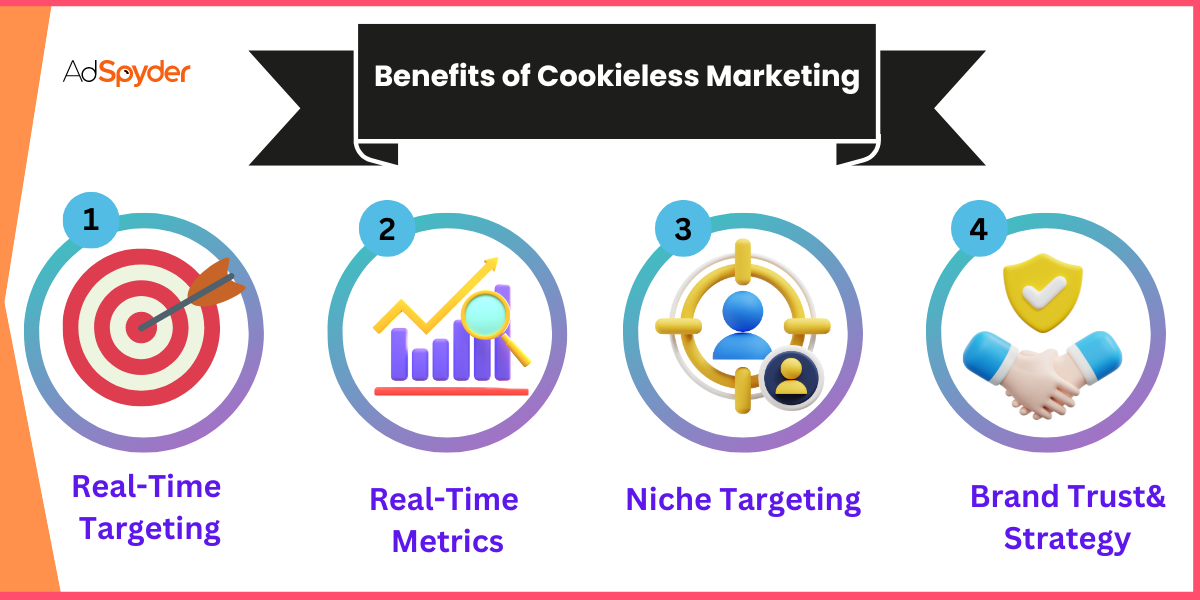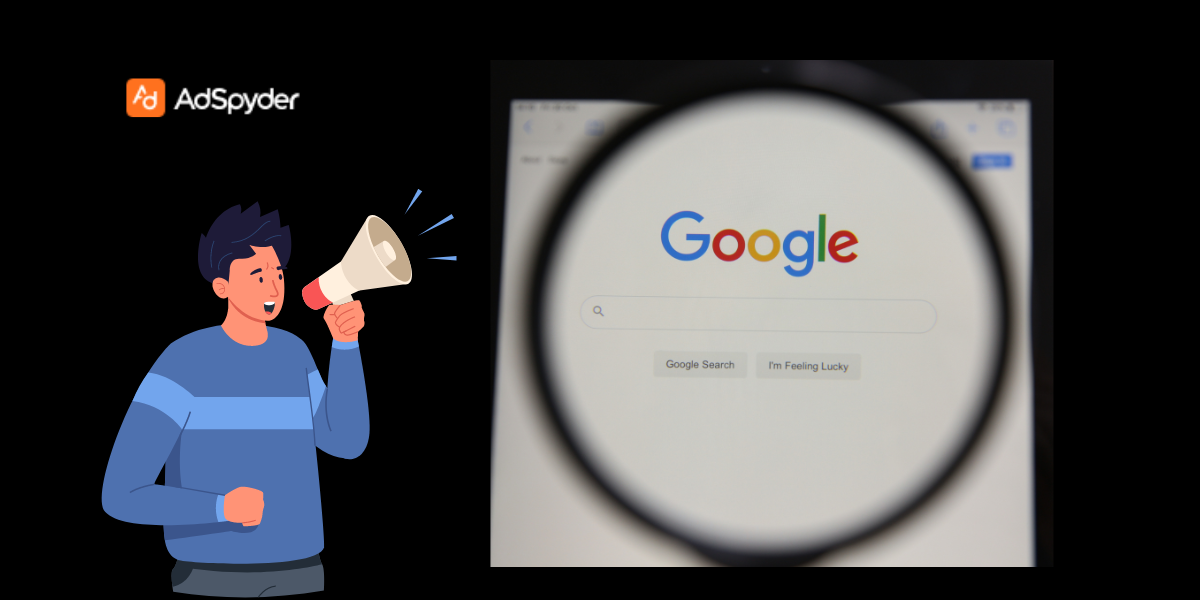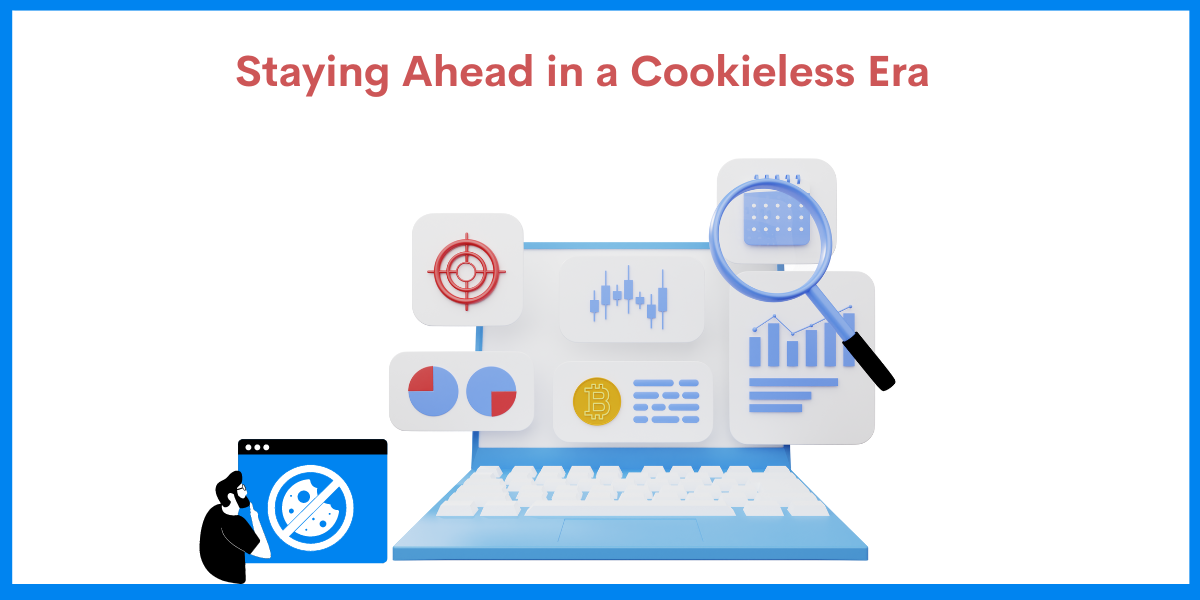In the ever-evolving landscape of digital advertising, the shift towards cookieless advertising is not just imminent—it’s here. With Google rolling out Consent Mode V2, marketers are facing a paradigm shift in how they track, analyze, and engage their audiences. Amidst these changes, AdSpyder, a key player in Google’s cookieless future, emerges as a powerful ally, offering a suite of AI-powered tools designed to help marketers thrive in this new environment.
Ready to Elevate your Marketing Strategy?
Understanding Cookieless Advertising

The Shift Away from Cookies
For decades, cookies have been the cornerstone of digital advertising, enabling marketers to track user behavior and personalize ads. However, growing privacy concerns and regulatory changes are leading us away from reliance on cookies. This shift represents a significant challenge for the industry but also an opportunity to innovate and prioritize user consent.
The transition away from cookies necessitates a reassessment of advertising. Marketers must pivot towards alternative methods of tracking and targeting audiences while respecting user privacy preferences. Techniques such as contextual advertising, first-party data collection, and consent-based tracking are becoming increasingly important in this new landscape.
- Shift Away from Cookies: Cookies have been central to tracking and personalization but are being phased out due to privacy concerns.
- New Strategies Needed: Marketers are pivoting to contextual advertising, first-party data collection, and consent-based tracking.
Implications for Marketers and Advertisers
The move towards cookieless advertising complicates how marketers track campaign performance and user engagement. Advertisers must now navigate a landscape where user privacy is paramount. Traditional methods of data collection are no longer viable.
As user privacy becomes increasingly central to digital advertising, marketers must adopt more transparent and consent-driven approaches to data collection and usage. They may also have to fous more on gaining customers’ trust via influencers, UGC ads and other means.
Google’s Consent Mode V2: A Game-Changer
What is Google Consent Mode V2?

Google’s Consent Mode V2 introduces a new framework for managing user consent, providing more granular control over the data collected. This update allows advertisers to respect user privacy while still gathering essential insights into ad performance and user interactions.
Consent Mode V2 operates by adjusting the behavior of Google tags, such as Google Analytics and Google Ads conversion tracking, based on users’ consent preferences. This enables advertisers to tailor their tracking and analytics practices to align with users’ consent preferences, fostering trust and transparency in digital advertising.
- Managing User Consent: Offers granular control over data collection, respecting user privacy while gathering insights.
- Adjusting Google Tags: Tailors tracking and analytics to align with user consent, enhancing trust in digital advertising.
Impact on Google Ads and Analytics
With Consent Mode V2, the accuracy of Google Ads analytics may be affected as users opt out of tracking. Marketers must adapt to these changes, seeking alternative methods to measure their campaigns’ effectiveness without compromising user trust.
To mitigate the impact of opt-outs on Google Ads performance tracking, marketers can explore additional metrics and attribution models to gauge campaign success accurately. Leveraging first-party data and advanced analytics techniques can also provide valuable insights into campaign performance in a cookieless environment.
- Adapting Measurement Methods: Seek alternative metrics and models to accurately gauge campaign success in a cookieless world.
AdSpyder: Your Ally in Cookieless Advertising
Introduction to AdSpyder’s Features
AdSpyder offers a comprehensive suite of tools leveraging AI to analyze, create, and optimize ad campaigns in a cookieless world. From Ad Library to Ad Optimization, AdSpyder provides the insights and automation needed to stay competitive.
In a cookieless advertising landscape, AdSpyder empowers marketers to navigate the complexities of audience targeting and campaign optimization through innovative AI-driven solutions. AdSpyder Google’s Cookieless Future by leveraging machine learning algorithms, AdSpyder helps marketers identify trends, predict consumer behavior, and optimize advertising strategies for maximum impact.
- AI-Powered Tools: Analyze, create, and optimize campaigns with features like Ad Library and Ad Optimization.
- Navigating Audience Targeting: Employs machine learning for trend analysis and strategy optimization without relying on cookies.
Ad Library: Competitive Insights at Your Fingertips
The Ad Library feature allows marketers to conduct digital marketing competitive analysis, offering insights into competitors’ ad strategies. This tool is invaluable for understanding how to position your campaigns effectively in a crowded market. You can check out social media ads that are run by your competitors without depending on any other source of data.
By leveraging the Ad Library feature, marketers can gain a deeper understanding of competitor tactics and identify opportunities to differentiate their campaigns in the absence of cookie-based targeting. Analyzing competitors’ ad creatives, messaging, and targeting parameters can inform strategic decisions and help marketers stay ahead of the competition.
Ad Analytics: Deep Dive into Your Campaigns
AdSpyder’s Ad Analytics goes beyond analyzing Google Ads data, offering a deeper understanding of campaign performance across various platforms. This tool helps marketers make data-driven decisions, even in the absence of cookies. Whether it is Search ads, social media ads, or Youtube ads, AdSpyder does it all.
With Ad Analytics, marketers can gain comprehensive insights into campaign performance metrics, allowing for informed adjustments and optimizations to maximize advertising ROI in a cookieless environment. By analyzing key performance indicators such as click-through rates, conversion rates, and return on ad spend, marketers can identify trends, uncover opportunities, and refine their advertising strategies for optimal results.
Enhancing Campaigns with AdSpyder
Ad Generation: Creativity Meets AI
AdSpyder’s Ad Generation tool uses AI to create compelling ad content tailored to your audience’s preferences. This feature enables marketers to produce creative, engaging ads that resonate with users, even without relying on personal data collected through cookies.
By harnessing AI-driven ad generation, marketers can deliver personalized and relevant ad experiences that drive engagement and conversions, irrespective of cookie limitations. AdSpyder’s Ad Generation tool analyzes audience demographics, interests, and behaviors to generate ad creatives optimized for maximum impact, helping marketers connect with their target audiences more effectively in a cookieless world.
- Ad Generation: Uses AI to produce engaging content tailored to audience preferences.
- Ad Optimization: Fine-tunes campaigns for optimal ROI using AI insights.
Ad Optimization: Maximizing ROI
The Ad Optimization tool is a cornerstone of Cookieless Future. It allows marketers to fine-tune their campaigns for the best possible ROI. By leveraging AI-driven insights, advertisers can adjust targeting and messaging. It can also adjust bidding strategies to achieve optimal performance, even in a cookieless landscape.
Through continuous optimization using AdSpyder’s AI-powered tools, part of the suite that defines AdSpyder: Google’s Cookieless Future, marketers can adapt to changing audience preferences and market dynamics, ensuring campaign success in a cookieless advertising ecosystem. AdSpyder’s Ad Optimization tool analyzes campaign performance data in real time, identifies areas for improvement, and automatically adjusts advertising parameters to maximize return on investment.”
Preparing for the Future with AdSpyder
Staying Ahead in a Cookieless Era

AdSpyder equips marketers with the tools and insights needed to stay ahead in the rapidly changing digital advertising space. By embracing AI and machine learning, advertisers can navigate the challenges of cookieless advertising and continue to deliver impactful campaigns.
As the digital advertising landscape evolves, AdSpyder remains at the forefront of innovation, enabling marketers to adapt and thrive in a cookieless future through advanced AI-driven solutions. By leveraging AdSpyder’s powerful features and capabilities, marketers can stay ahead of the curve, drive business growth, and achieve long-term success in an increasingly privacy-conscious advertising environment.
- Staying Ahead: Offers advanced solutions to thrive in the evolving digital advertising landscape.
- Integrating with Google Consent Mode V2: Balances data-driven advertising with user privacy, maintaining compliance and performance.
Leveraging Google Consent Mode V2 with AdSpyder
AdSpyder seamlessly integrates with Google Consent Mode V2. It ensures that marketers can respect user privacy while still accessing critical data for campaign optimization. This synergy allows advertisers to adapt to the new norms of digital marketing. This is done while maintaining compliance without sacrificing performance.
With AdSpyder: Google’s Cookieless Future, marketers can strike the right balance between data-driven advertising and user privacy, fostering trust and transparency in their advertising practices. The seamless integration with Google Consent Mode V2 enables marketers to leverage valuable audience insights while respecting user consent preferences, empowering them to deliver personalized and relevant ad experiences in a cookieless world.
Conclusion
As the digital advertising industry moves towards a cookieless future, AdSpyder stands ready to help marketers navigate this transition. With its powerful suite of AI-powered tools, AdSpyder offers a way to analyze, create, and optimize ad campaigns that comply with new privacy standards and user expectations. By leveraging AdSpyder’s capabilities, advertisers can remain competitive and effective in a world where user consent is king. Embrace the future of advertising with AdSpyder: Google’s Cookieless Future and turn the challenges of cookieless advertising into opportunities for growth and innovation.



